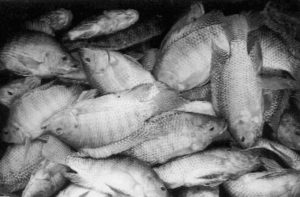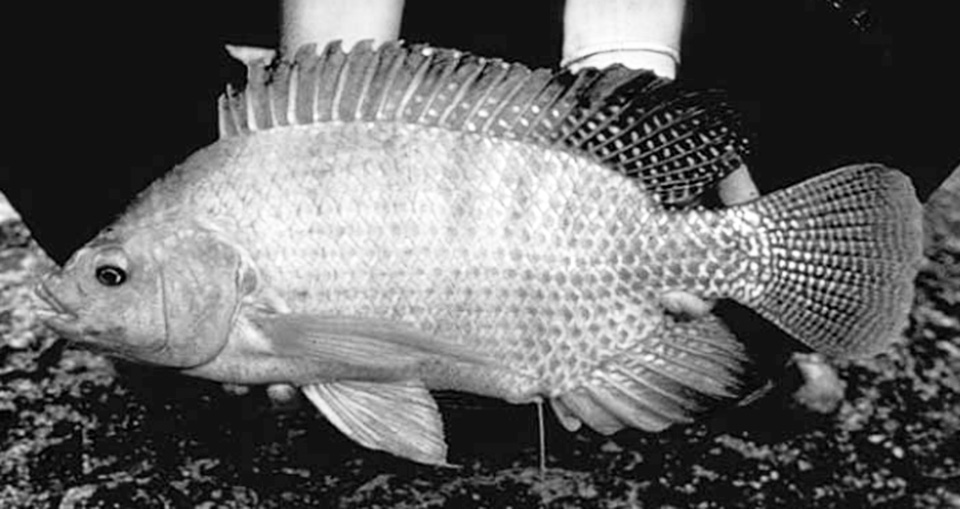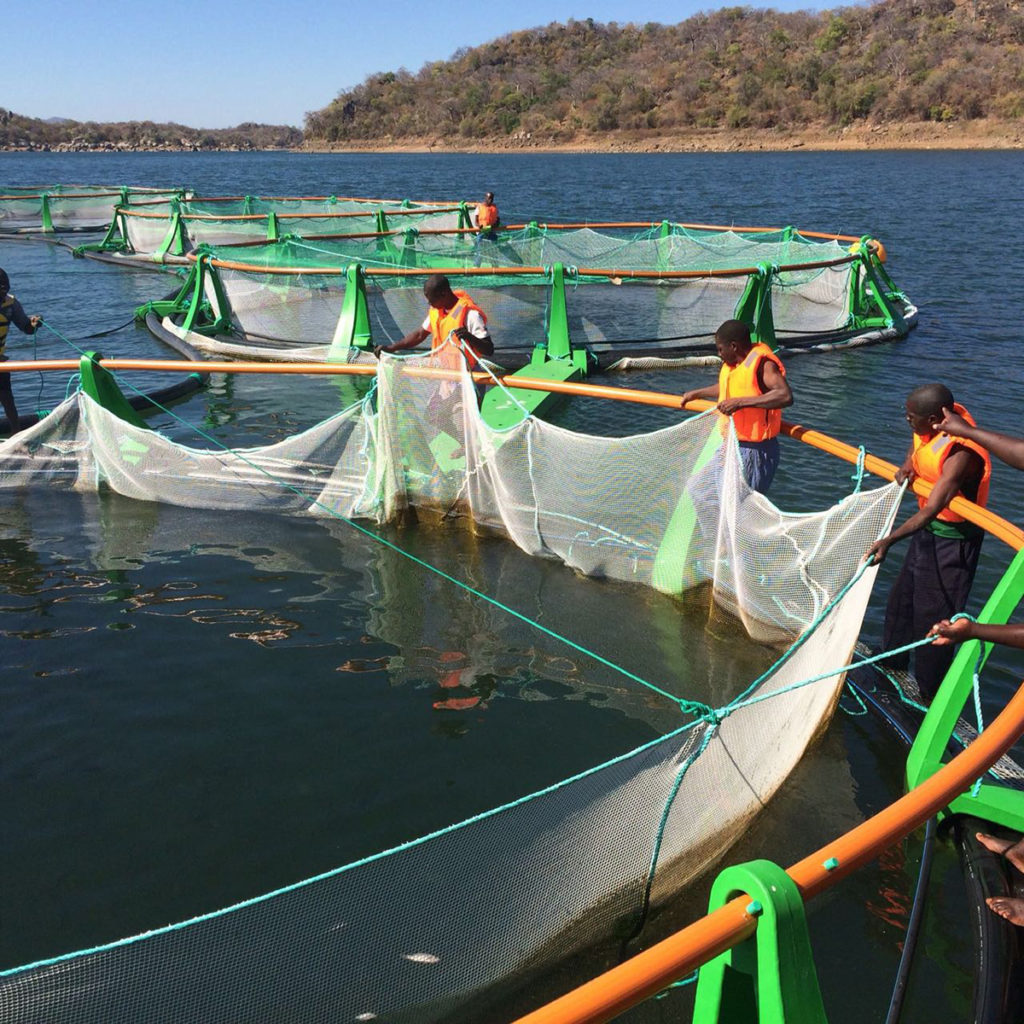Cutting feed use reduces costs, reduces fishmeal use

In the tilapia-producing areas of Central Luzon Island in the Philippines, the fishmeal and rice bran diets in widespread use represent the largest components of farm production costs. Whether tilapia feeds are produced commercially or milled from locally available products, feeds typically account for 60 to 70 percent of production costs, cutting deeply into farm profits and keeping farmed fish prices elevated. Farmers, consumers, and environmentalists alike support reductions in the dependence on fishmeal for the production of fish.
Over the past five years, the authors carried out a series of experiments at and around Central Luzon State University (CLSU) designed to determine optimal feeding strategies for tilapia. Financial support for the project came mainly from a USAID grant funded through the Pond Dynamics Aquaculture Collaborative Research Support Program. Although the consensus among tilapia farmers was that heavy feeding is a prerequisite to vigorous tilapia crop health and productivity, study results showed otherwise.
Moderated feeding
It has been argued in scientific literature that optimal feeding levels should be below the level that supports maximal growth. Heavy feeding raises the risks of water quality and possible health problems through increased waste, feed decomposition and subsequent disruptions at the microbial level.
Earlier studies by Diana and co-workers showed moderate feeding of tilapia is an effective strategy in Thailand. Other studies by De Silva and coworkers led to the conclusion that growth performance was not compromised by relatively light feeding. The authors’ studies were based on the premise that reduced feeding can reveal profitable strategies using sex-reversed Nile tilapia (Oreochromis niloticus) from the Genetically Improved Farm Tilapia Foundation.
Study series
Feeding strategies were tested at the CLSU experimental station under controlled conditions and field tested in large-scale commercial production through the cooperation of up to 10 farms in the region.
Delayed feeding
The first in a series of experiments was a comparison of early and late-onset feeding in fertilized ponds stocked with small tilapia fingerlings. In this farm-scale study, the initial onset of feeding was set at either 45 or 75 days poststocking. Yields, weight gains, and survival rates were calculated and compared after a 150-day grow-out cycle.
No significant differences in growth parameters were recorded for the two treatments, and survival ranged 85 to 87 percent. Extrapolated fish yields were also not statistically significant (P >0.05). The earlier feeding strategy required 37 percent more prepared feed than the delayed feeding. Economic modeling revealed that the delayed feeding strategy resulted in about U.S. $400 per hectare per grow-out cycle greater profit.
Reduced feeding
A second round of similarly designed experimentation evaluated the consequences of feeding fish less. In this set of farm-scale studies, growth, survival, and yield were compared among tilapia fed daily at 100 percent or 67 percent of experimentally determined satiation. An analysis of growth performance demonstrated that the reduction of ration to 67 percent of satiation had no effect on growth or yield. Again, the more moderate feeding strategy was more profitable as a result of the reduction in feed costs.
A third study combined the delayed feeding and reduced ration strategies of the first two experiments. It again demonstrated that feeding at a 67 percent satiation level reduced production costs in tilapia culture, but the overall profitability of the combined reduction of ration and delayed onset of feeding was compromised.
Alternated feeding
A fourth feeding strategy tested the provision of prepared feeds to tilapia on alternate days, as compared to daily feeding. The reduction of feed did not result in any changes in growth or significant loss in the harvest, but unquestionably led to a huge increase in profitability.
Conclusion
Cutting feed use without significantly diminishing production obviously reduces costs, but is also an environmentally sound practice because it reduces fishmeal use. In addition, reducing labor associated with feeding without changing the nature of the final product is an inherently good thing.
Study data and farmers’ observations indicated that tilapia fed moderated diets were robust and healthy. Neither growth nor survival were compromised. It is unclear whether the reduced diets sustained growth as a consequence of increased absorption efficiency and hence better feed conversion, reduced waste, or both.
Editor’s Note: Cited references are available from the first author.
(Editor’s Note: This article was originally published in the August 2004 print edition of the Global Aquaculture Advocate.)
Now that you've reached the end of the article ...
… please consider supporting GSA’s mission to advance responsible seafood practices through education, advocacy and third-party assurances. The Advocate aims to document the evolution of responsible seafood practices and share the expansive knowledge of our vast network of contributors.
By becoming a Global Seafood Alliance member, you’re ensuring that all of the pre-competitive work we do through member benefits, resources and events can continue. Individual membership costs just $50 a year.
Not a GSA member? Join us.
Authors
-
Christopher L. Brown, Ph.D.
Marine Biology Program
Florida International University
3000 N.E. 151 Street, AC1 378
North Miami, Florida 33181 USA[117,100,101,46,117,105,102,64,104,99,110,119,111,114,98]
-
Remedios B. Bolivar, Ph.D.
Central Luzon State University
Science City of Muñoz
Nueva Ecija, Philippines -
Eddie Boy T. Jimenez
Central Luzon State University
Science City of Muñoz
Nueva Ecija, Philippines
Related Posts

Health & Welfare
10 paths to low productivity and profitability with tilapia in sub-Saharan Africa
Tilapia culture in sub-Saharan Africa suffers from low productivity and profitability. A comprehensive management approach is needed to address the root causes.

Health & Welfare
‘Super male’ Nile tilapia outperform hormone-reversed fish in Nicaragua
A recent study compared the growth and survival at different salinity levels of “super male” (YY) tilapia with normal sex O. niloticus reversed to 100 percent phenotypic males.

Responsibility
Brazil’s inland aquaculture
Freshwater fish culture is practiced in every state in Brazil, primarily at small-scale earthen pond facilities, but tilapia culture in reservoir cages is increasing.

Responsibility
‘Model’ tilapia venture shows mettle in Mozambique
On the shores of Lake Cahora Bassa, Chicoa Fish Farm hopes to create a ripple effect to improve fish supply and quality of life for an impoverished region.


